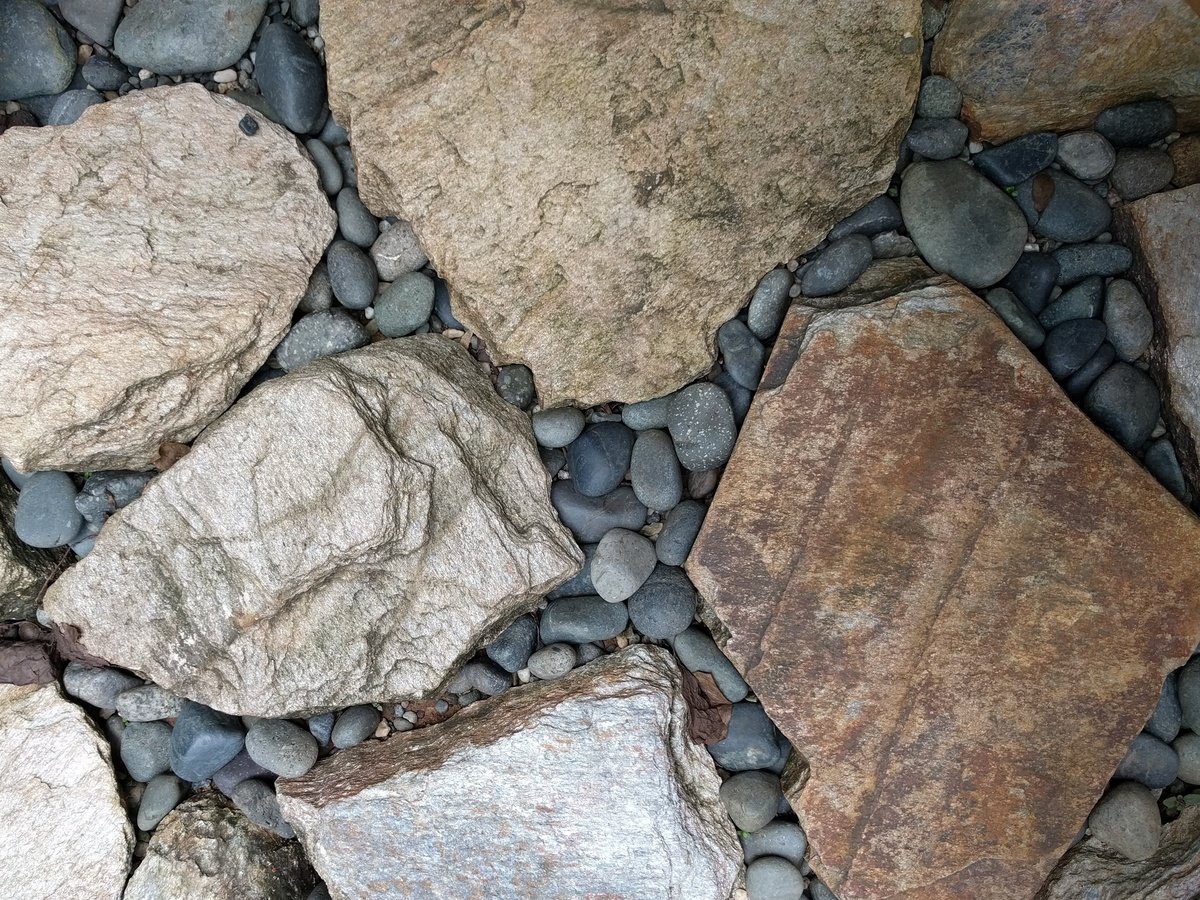
Just like snowflakes, no two flagstones are the same. As a true product of nature, flagstone comes in a million different shapes, sizes, and colors depending on where it comes from. This incredible diversity helps homeowners like you create hardscapes that are truly unique.
Different flagstones don’t only look different, though. They also have varying thicknesses, textures, levels of permeability, and uses. These durable, versatile unsung heroes of landscaping can be a part of just about any hardscape you could think of.
To help you narrow down the possibilities, we’ve come up with eight flagstone ideas to incorporate in your yard.
What is flagstone?
Natural flagstone is sedimentary rock broken up into layers and used for landscaping. There are many different types of flagstone, all with their own features. Some popular varieties include sandstone, quartzite, bluestone, and limestone.
Most flagstones come in one of two shapes:
- Cut paver stones in different-sized rectangles with straight edges and clean lines.
- Irregular, roundish stones used for “crazy paving,” which means fitting those random shapes together for an informal, natural look.
For either shape option, you can lay flagstones dry on a bed of sand or gravel (“dry-laid”) or use concrete (“wet-laid”). If you’re using thinner flagstones, it’s a good idea to lay them in concrete, as they sometimes crack easily when laid dry.
Whatever kind of landscaping project you’re working on, the cost of flagstone is typically $15 to $20 per square foot. That price covers all the materials needed, including the stone itself and sand, gravel, or concrete.
The price varies depending on what specific type of flagstone you use and whether it’s dry-laid or wet-laid. Dry-laid is typically cheaper because you won’t have to pay for concrete.
8 Ways to Use Flagstone in Your Landscaping
Now that we’ve covered the basics of flagstone, let’s get into our eight design ideas for using them in your landscape.
1. Design a unique flagstone patio
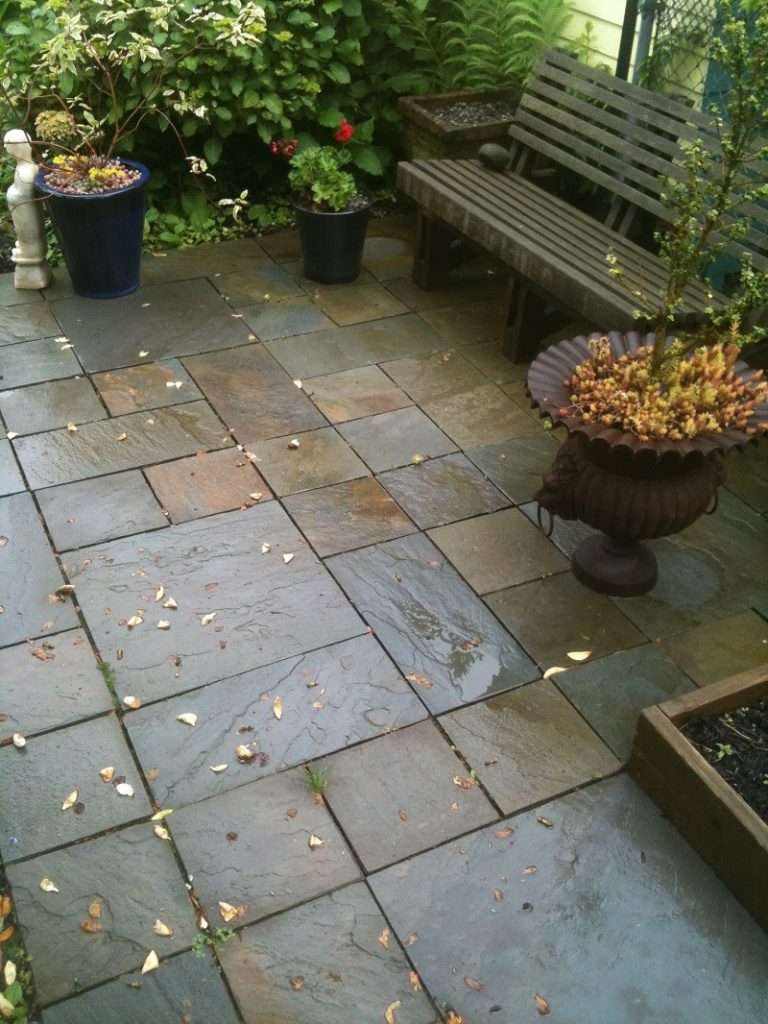
With flagstones, you can design your own patio to fit any home or landscape style. Use geometric shapes like those pictured above for a more formal look or irregular flagstones if you have a more eccentric flagstone patio idea.
Flagstones are perfect for high-traffic areas like patios because their rough texture makes them slip-resistant.
You can easily turn your flagstone patio into an outdoor living space by adding some patio furniture and a pergola or other cover.
2. Guide guests with a flagstone walkway
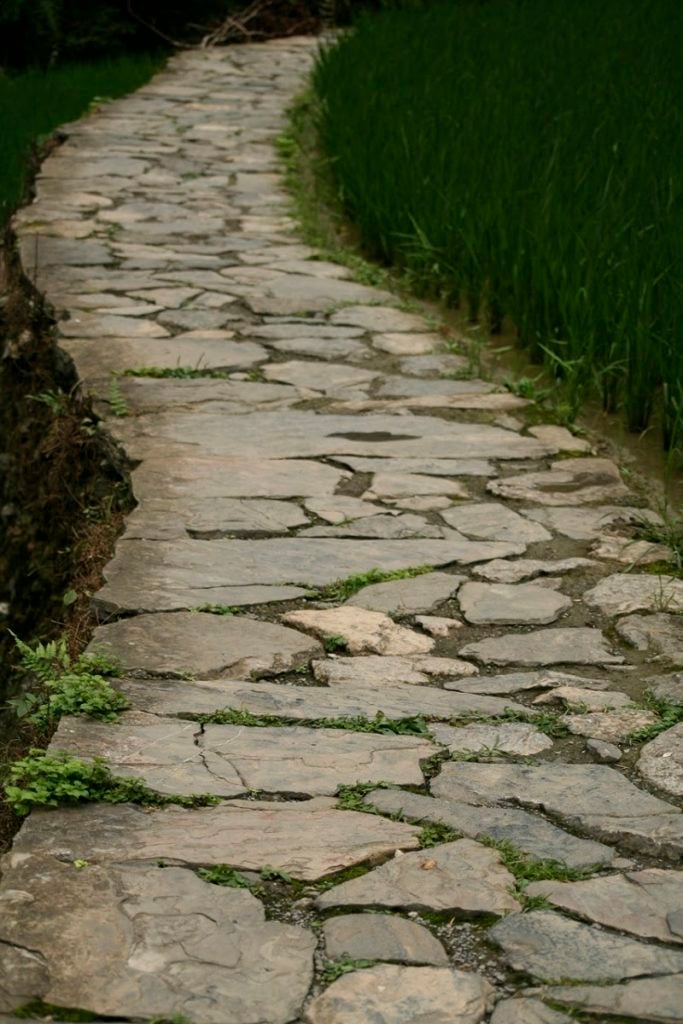
The only limit on flagstone walkway designs is your imagination. If you want a storybook forest path winding through your garden, use irregular flagstones interspersed with grass or ground cover plants.
If small children, elderly relatives, or other tripping-prone guests regularly frequent your house, you can create a smooth, straight sidewalk of flagstone pavers instead.
As with flagstone patios, flagstone pathways are naturally slip-resistant because of the stone’s texture, so you won’t have to worry about your paths getting slick with rainwater.
3. Get creative with stepping stones
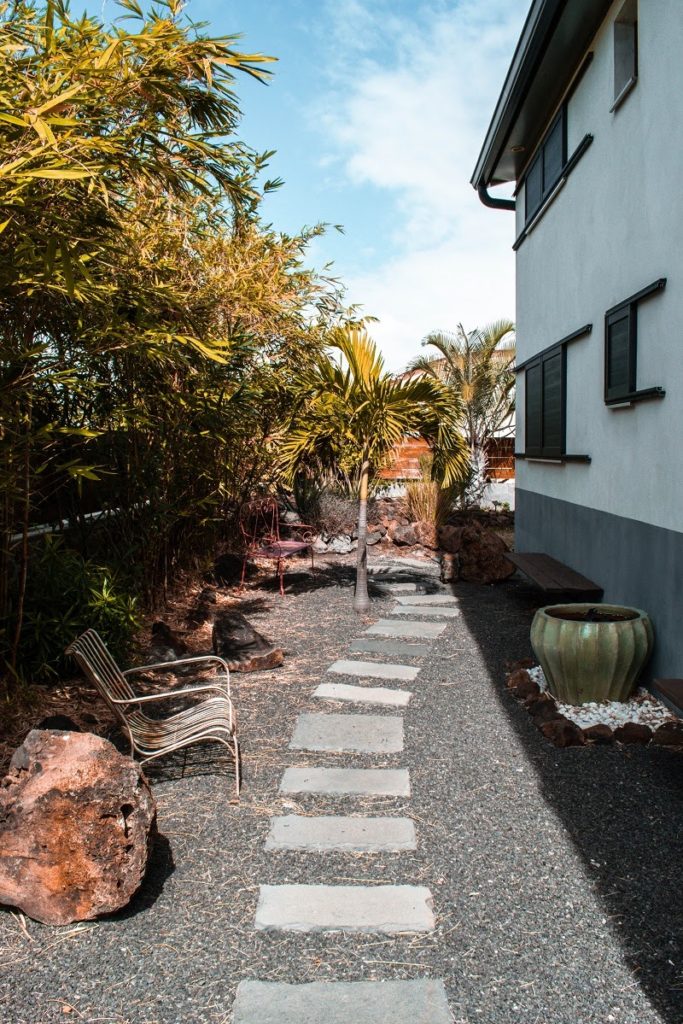
To make stepping stones, space your flagstones several inches apart and fill the gaps with pea gravel, river rock, or ground cover plants to suppress weeds. You can use pavers for a more modern look like this one or irregular flagstones for a cottage-style garden path.
Laying stepping stones will typically be cheaper than installing a traditional path, since you’re using less stone to cover the same amount of space. Aside from being cheaper, stepping stones are also more whimsical and adventurous.
4. Build a retaining wall using flagstones

Though people might not typically use flagstones as stone for retaining walls, it is an option. You can stack flagstones to create a low wall in your landscape. Just don’t try stacking them too tall. You know what happened to Icarus when he flew too close to the sun.
When you make a retaining wall out of flagstones, you can either stack them dry or use mortar to hold them together. For a sturdier, more long-lasting wall, you should definitely consider using mortar (even though it might make your project a little more expensive).
5. Edge your garden with flagstones
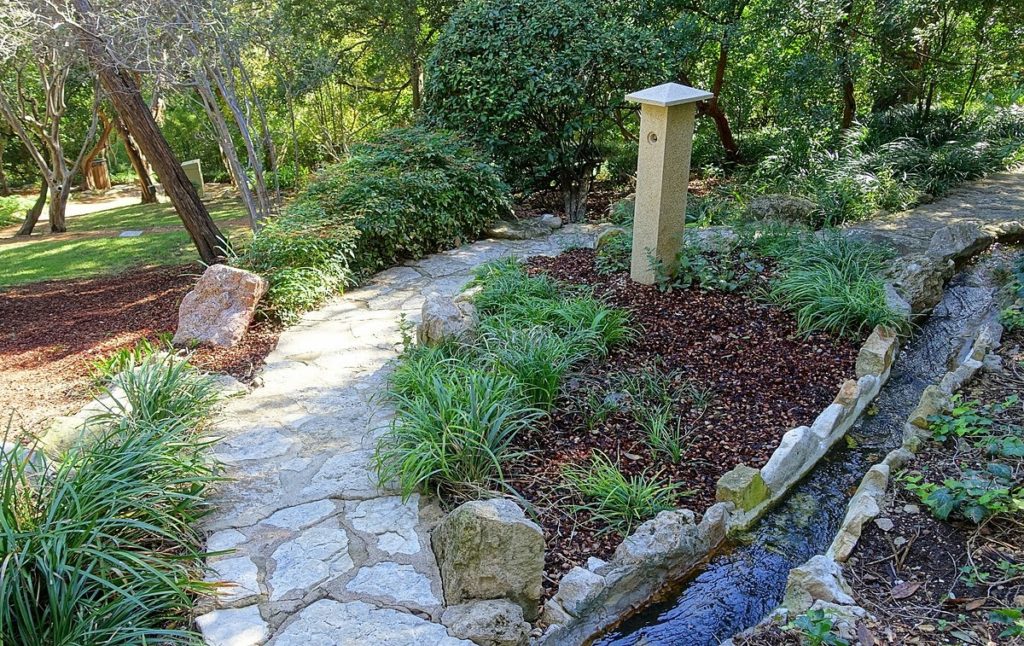
Photo Credit: Daderot / CC0 / via Wikimedia
Garden edging is simply a border that goes around your landscape beds to keep grass out and make your whole yard look more polished. Again, you can achieve different looks for your garden or flower bed using different types of flagstones.
Pavers will make your landscape look more geometric and modern, while irregular flagstones (like the ones pictured) offer a wilder, more natural aesthetic. Since flagstones come in all different colors, you can find the perfect ones to match or contrast the colors of your plants.
6. Add a rustic border around your water feature

Flagstones are heavy enough to hold down liners for ponds and other similar water features, so they make great borders. Some types of flagstone are also permeable, which means they’ll absorb water instead of causing runoff if they get wet from your pond, waterfall, or fountain overflowing.
With flagstone pavers, you can create a straight, clean edge for a contemporary aesthetic, or go with irregular flagstones for a reliable border that blends in with a natural-style pond.
7. Upgrade your swimming pool with a flagstone pool deck

Because flagstones are slip-resistant, they’re the perfect material for swimming pool or hot tub decks, where friends and family will regularly run around barefoot. Some types of flagstone, such as sandstone, don’t absorb heat, so they won’t burn your feet, either.
And again, flagstones are permeable, so you can splash them all you want without worrying about water runoff flooding your lawn.
8. Create a cozy night-time hangout with a fire pit

If you’re thinking of building a fire pit in your backyard, consider using flagstones to create a rustic outdoor living space. You can use the same type and color of flagstone for the patio/seating area around the fire pit and the fire pit itself for a seamless look or use contrasting colors for a more striking, edgy design.
FAQ About Landscaping With Flagstone
Is flagstone more expensive than pavers?
Yes, natural stone like flagstone is more expensive than other pavers. It’s also usually more expensive to install, whether you use a pro or do it yourself.
What is the cheapest flagstone?
Limestone and sandstone are typically the cheapest flagstones. Locally sourced stone will always be cheaper than stone shipped from far away, so visit a local stone yard to find the most affordable options in your area.
Can you lay flagstone directly in soil?
You can lay thick, heavy pieces of flagstone directly in soil, and they should be fine. Here’s how to do it.
Thinner pieces of flagstone are better off with a base of concrete, since they can break easily when laid alone.
When to Call a Landscaping Professional
Since there are so many different types and styles of flagstone, you might want a professional landscaper’s help figuring out which one is best for your specific project. A pro can also help you come up with more unique landscaping ideas for using flagstone in your yard.
If you use a landscaping professional instead of going the DIY route, you can rest assured that your flagstones will be laid correctly so they can enhance your landscape for years to come.
Main Photo Credit: Pxhere